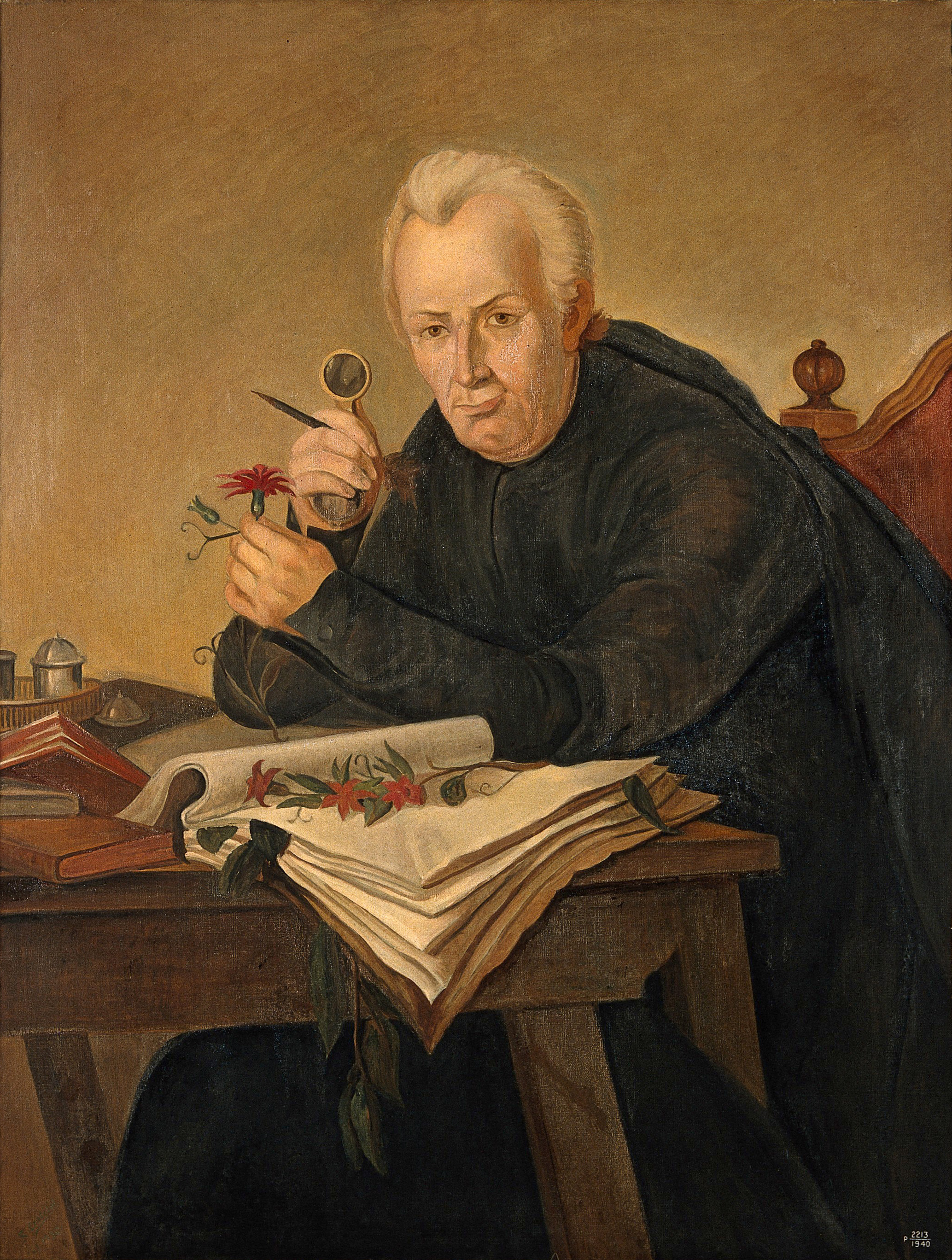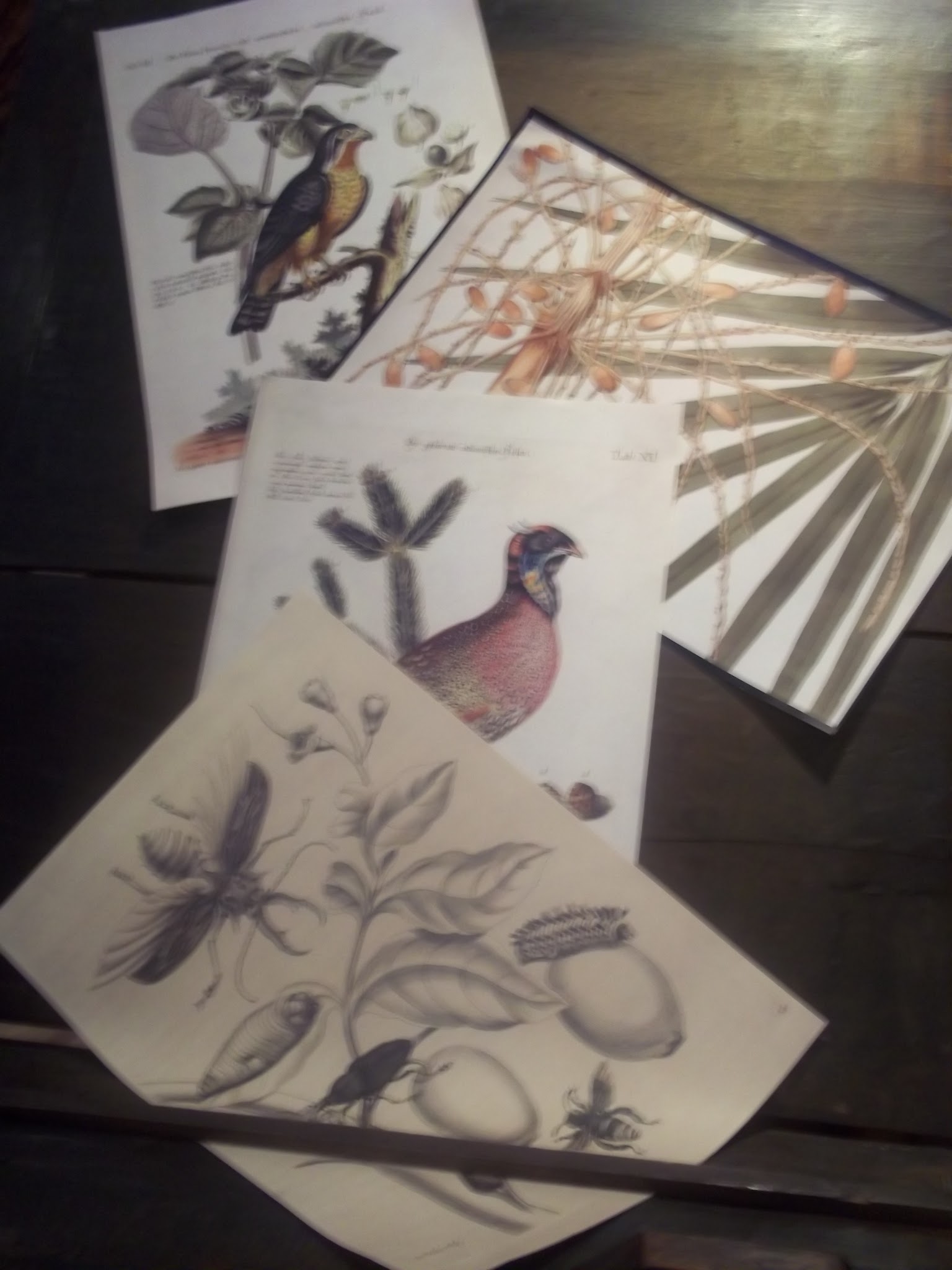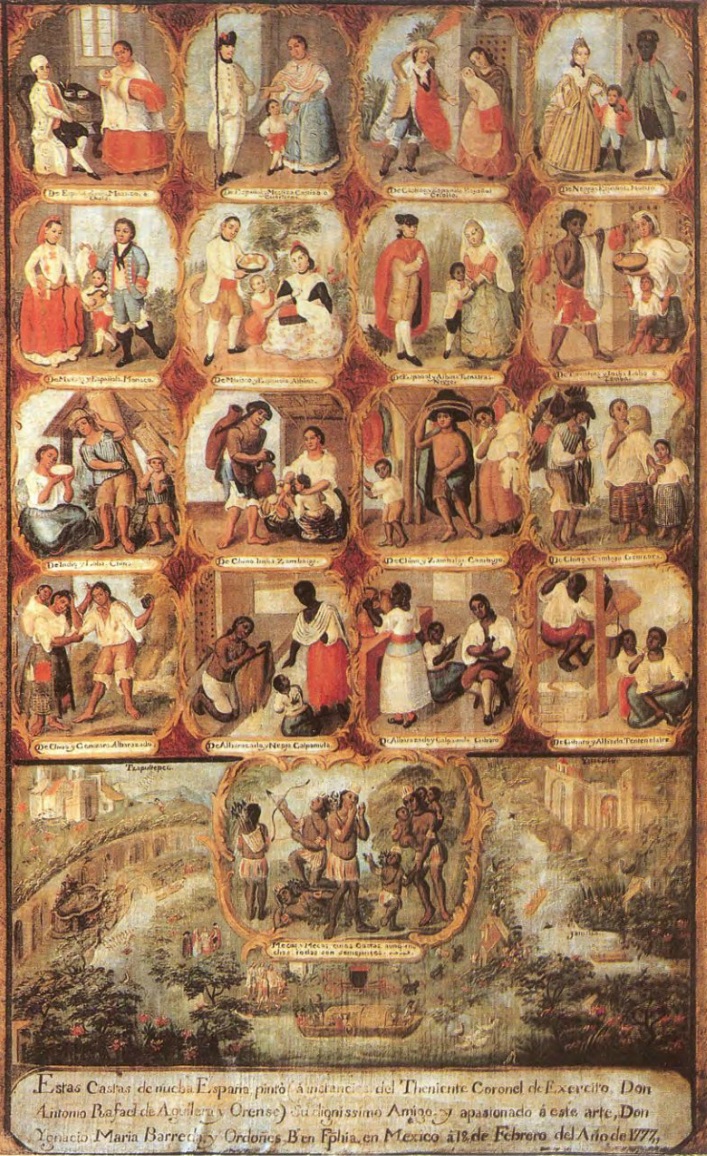Spanish American Enlightenment on:
[Wikipedia]
[Google]
[Amazon]
The ideas of the Spanish Enlightenment, which emphasized reason, science, practicality, clarity rather than obscurantism, and secularism, were transmitted from France to the 
 Priests pursued science, even in the seventeenth-century “baroque” era, most prominently Mexican creole intellectual Don
Priests pursued science, even in the seventeenth-century “baroque” era, most prominently Mexican creole intellectual Don  The exile of the Jesuits to Europe was a blow to elite American-born Spanish families, whose sons were educated by the Jesuits or themselves Jesuits and has been seen as contributing to creole alienation from the Bourbon monarchy. An important exiled Jesuit was
The exile of the Jesuits to Europe was a blow to elite American-born Spanish families, whose sons were educated by the Jesuits or themselves Jesuits and has been seen as contributing to creole alienation from the Bourbon monarchy. An important exiled Jesuit was  Art and architecture were cultural expressions that felt the impact of Enlightenment ideas. The Academy of San Carlos was founded in 1781 as the School for Engraving, and two years later renamed the(Real Academia de la Tres Nobles Artes de San Carlos.
Art and architecture were cultural expressions that felt the impact of Enlightenment ideas. The Academy of San Carlos was founded in 1781 as the School for Engraving, and two years later renamed the(Real Academia de la Tres Nobles Artes de San Carlos.
New World
The term ''New World'' is often used to mean the majority of Earth's Western Hemisphere, specifically the Americas."America." ''The Oxford Companion to the English Language'' (). McArthur, Tom, ed., 1992. New York: Oxford University Press, p. ...
in the eighteenth century, following the establishment of the Bourbon monarchy in Spain. In Spanish America
Spanish America refers to the Spanish territories in the Americas during the Spanish colonization of the Americas. The term "Spanish America" was specifically used during the territories' imperial era between 15th and 19th centuries. To the e ...
, the ideas of the Enlightenment affected educated elites in major urban centers, especially Mexico City, Lima, and Guatemala, where there were universities founded in the sixteenth and seventeenth centuries. In these centers of learning, American-born Spanish intellectuals were already participants in intellectual and scientific discourse, with Spanish American universities increasingly anti-scholastic and opposed to “untested authority” even before the Spanish Bourbons came to power. The best studied is the University of San Carlos Guatemala, founded in 1676.
In Spanish America just as in Spain, the Enlightenment had some aspects of anticlericalism, but many priests were in favor of science and scientific thinking and were practitioners themselves. Some clergy were proponents of the Enlightenment as well as independence. Enlightenment texts circulating in Spanish America have been linked to the intellectual underpinnings of Spanish American independence.
Works by Enlightenment philosophers were owned and read in Spanish America, despite restrictions on the book trade and their inclusion on the Inquisition’s list of forbidden books . The Jesuits
, image = Ihs-logo.svg
, image_size = 175px
, caption = ChristogramOfficial seal of the Jesuits
, abbreviation = SJ
, nickname = Jesuits
, formation =
, founders = ...
were instrumental introducing new trends in philosophy to Spanish America, and following their expulsion in 1767, the Franciscans continued exploring this line of thought. Spanish American secular clergy owned such works, including Mexican priest Miguel Hidalgo y Costilla, whose free-thinking lost him his position as rector of the seminary of San Nicolás and he was sent to the small parish of Dolores.

 Priests pursued science, even in the seventeenth-century “baroque” era, most prominently Mexican creole intellectual Don
Priests pursued science, even in the seventeenth-century “baroque” era, most prominently Mexican creole intellectual Don Carlos de Sigüenza y Góngora
Don Carlos de Sigüenza y Góngora (August 14, 1645 – August 22, 1700) was one of the first great intellectuals born in the New World - Spanish viceroyalty of New Spain (Mexico City). He was a criollo patriot, exalting New Spain over Old. ...
, as well as the remarkable Mexican nun, Sor Juana Inés de la Cruz
''Doña'' Inés de Asbaje y Ramírez de Santillana, better known as Sor Juana Inés de la Cruz (12 November 1648 – 17 April 1695) was a Mexican writer, philosopher, composer and poet of the Baroque period, and Hieronymite nun. Her contribut ...
. In the eighteenth century, there were several Spanish-born as well as American-born priests practicing science. Prominent among them was Spanish-born José Celestino Mutis
José Celestino Bruno Mutis y Bosio (6 April 1732 – 11 September 1808) was a Spanish priest, botanist and mathematician. He was a significant figure in the Spanish American Enlightenment, whom Alexander von Humboldt met with on his expedit ...
in New Granada, who headed the royal botanical expedition to New Granada. He was educated in mathematics, astronomy, and medicine. Mutis trained Francisco José de Caldas
Francisco José de Caldas (October 4, 1768 – October 28, 1816) was a Colombian lawyer, military engineer, self-taught naturalist, mathematician, geographer and inventor (he created the first hypsometer), who was executed by orders of Pabl ...
. In Peru, Hipólito Unanue
José Hipólito Unanue y Pavón (August 13, 1755–July 15, 1833) was a physician, naturalist, meteorologist, cosmographer, the first Minister of Finance of Peru, Minister of Foreign affairs, Protomédico (equivalent to Minister of health co ...
, a secular cleric trained in medicine, contributed to a Peruvian publication, ''Mercurio Peruano''. Similar to him was Mexican secular cleric José Antonio de Alzate y Ramírez
José Antonio de Alzate y Ramírez (20 November 1737 – 2 February 1799) was a priest in New Spain, scientist, historian, cartographer, and journalist.
Life and career
He was born in Ozumba in 1737, the child of Felipe de Alzate and María ...
, who founded important newspapers that disseminated knowledge about scientific findings, including his own. Alexander von Humboldt
Friedrich Wilhelm Heinrich Alexander von Humboldt (14 September 17696 May 1859) was a German polymath, geographer, naturalist, explorer, and proponent of Romantic philosophy and science. He was the younger brother of the Prussian minister, ...
met and consulted with Mutis, Caldas, and read the works of Alzate (who died just before Humboldt arrived in New Spain) during his scientific expedition to Spanish America at the beginning of the nineteenth century. Humboldt was impressed by the intellectual level of science in Spanish America.
Two strains of philosophical thought were evident in Spanish America, one was enlightened despotism and the other variations on constitutionalism. Divisions among clerics in Spanish America were between those supporting regalism, that is, the supremacy of the crown over the Catholic Church, and those adhering to ultramontanism, supporting the power of the papacy over monarchs. The Spanish crown moved to consolidate its supremacy over the Catholic Church by suppressing the Society of Jesus
, image = Ihs-logo.svg
, image_size = 175px
, caption = ChristogramOfficial seal of the Jesuits
, abbreviation = SJ
, nickname = Jesuits
, formation =
, founders ...
in Spain and in its overseas empire in 1767. The Jesuits were “soldiers of the Pope”, taking a vow to serve the pontiff. They were successful in their missions to indigenous peoples on the frontiers of the Spanish empire, such as northern Mexico and most famously in Paraguay. Jesuit educational institutions had as pupils the sons of American born Spaniards, and were places where ideas of the Enlightenment were disseminated. The Jesuits held a considerable number of profitable landed estates, or haciendas, which were run efficiently by Jesuits trained in management. Their loyalty to the pope and their defiance of the crown authority as well as their clear success in important realms where the diocesan clergy or other religious orders might have excelled meant that their expulsion in 1767 was not opposed by the episcopal hierarchy or religious orders.
 The exile of the Jesuits to Europe was a blow to elite American-born Spanish families, whose sons were educated by the Jesuits or themselves Jesuits and has been seen as contributing to creole alienation from the Bourbon monarchy. An important exiled Jesuit was
The exile of the Jesuits to Europe was a blow to elite American-born Spanish families, whose sons were educated by the Jesuits or themselves Jesuits and has been seen as contributing to creole alienation from the Bourbon monarchy. An important exiled Jesuit was Francisco Javier Clavijero
Francisco Javier Clavijero Echegaray (sometimes ''Francesco Saverio Clavigero'') (September 9, 1731 – April 2, 1787), was a Mexican Jesuit teacher, scholar and historian. After the expulsion of the Jesuits from Spanish provinces (1767), he ...
, who wrote a major history of Mexico, seeing its origins in the achievements of indigenous civilizations and creating an idea of Mexico separate from peninsular Spain.
The Spanish crown also moved against the clergy as a whole by attempted to limit the corporate privileges of the Catholic Church, the ''fuero eclesiástico'', which gave clerics the right to be judged for all offenses in canonical rather than crown courts. The ''fuero'' had been an important factor in strengthening the prestige and power of the lower secular clergy. Parish priests were often the only person of European ethnicity in indigenous parishes, who exercised both political and sacred power.
In late colonial Mexico, an important bishop-elect Manuel Abad y Queipo, considered liberal, and sought social, economic, and political reforms, but he firmly opposed Father Hidalgo’s 1810 uprising for independence. Abad y Queipo gave Humboldt some of his writings on conditions in New Spain and the need for reform to Humboldt, and his ideas found their way into Humboldt’s famous ‘’Political Essay on the Kingdom of New Spain’’.
Another development in Spanish America was the formation of economic societies and “friends of the country,” by elite men to improve the local economy through science. They also functioned as discussion groups that considered political issues, particularly as crown policies increasingly favored the peninsula.
The crown founded a number of institutions aimed at scientific and economic progress, as well as cultural advancement. In Mexico, the crown established of the College of Mines in 1792, directed by Spanish mineralogist Fausto Elhuyar
Fausto de Elhuyar (11 October 1755 – 6 February 1833) was a Spanish chemist, and the first to isolate tungsten with his brother Juan José Elhuyar in 1783. He was in charge, under a King of Spain commission, of organizing the School of Mines i ...
. It was designed to train experts for the empire’s most lucrative industry, silver mining.
 Art and architecture were cultural expressions that felt the impact of Enlightenment ideas. The Academy of San Carlos was founded in 1781 as the School for Engraving, and two years later renamed the(Real Academia de la Tres Nobles Artes de San Carlos.
Art and architecture were cultural expressions that felt the impact of Enlightenment ideas. The Academy of San Carlos was founded in 1781 as the School for Engraving, and two years later renamed the(Real Academia de la Tres Nobles Artes de San Carlos. Miguel Cabrera
José Miguel Cabrera Torres (born April 18, 1983), nicknamed "Miggy", is a Venezuelan professional baseball first baseman and designated hitter for the Detroit Tigers of Major League Baseball (MLB). Since his debut in 2003 he has been a two-t ...
was one of its most important members. The Palacio de Minería
The Palace of Mining, also Palace of Mines, ( es, Palacio de Minería) is a building in Mexico City, Mexico, considered to be a fine example of Neoclassical architecture in the Americas. It was designed and built between 1797 and 1813 by Valencia ...
in Mexico City and the hospicio in Guadalajara, as well as the cathedral in Buenos Aires were designed in the neoclassical style, favoring clean lines and minimal decoration, in contrast to the more ornate baroque architecture. "Readily understandable and providing solace in its promise of heavenly glory, the Baroque is an art for the people. It was this very popularity that led to the anti-Baroque movement of the highbrow Neoclassical academies of the eighteenth century." The growth of scientific ideas and the development of different kinds of taxonomy, such as Carl Linnaeus
Carl Linnaeus (; 23 May 1707 – 10 January 1778), also known after his Nobility#Ennoblement, ennoblement in 1761 as Carl von Linné#Blunt, Blunt (2004), p. 171. (), was a Swedish botanist, zoologist, taxonomist, and physician who formalise ...
’s, may well have been the impetus behind the emergence of secular paintings of racial mixture and racial hierarchy in late eighteenth-century Mexico, called casta paintings.
The crown attempted to rein in popular aspects of “baroque” Catholicism, eliminating burials in the interior of churches and churchyards as a public health measure. It successfully suppressed Carnival in Mexico and sought to downsize popular pious practices such as religious processions. Secular entertainments such as bullfighting were no longer supported by the crown, and theatrical productions had didactic and secular themes rather than religious.Juan Pedro Viqueira Albán, Propriety and Permissiveness in Bourbon Mexico. Trans. Sonya Lippsett-Rivera and Sergio Rivera Ayala. Wilmington DL: Scholarly Resources 1999.
See also
*Spanish Empire
The Spanish Empire ( es, link=no, Imperio español), also known as the Hispanic Monarchy ( es, link=no, Monarquía Hispánica) or the Catholic Monarchy ( es, link=no, Monarquía Católica) was a colonial empire governed by Spain and its prede ...
* Spanish Enlightenment
*Historiography of Colonial Spanish America
The historiography of colonial Spanish America in multiple languages is vast and has a long history. It dates back to the early sixteenth century with multiple competing accounts of the conquest, Spaniards’ eighteenth-century attempts to discove ...
Further reading
*Aldridge, Alfred Owen. ''The Ibero-American Enlightenment''. Urbana: University of Illinois Press 1971. *Barrera-Osorio, Antonio. ''Experiencing Nature: The Spanish American Empire and the Early Scientific Revolution''. Austin: University of Texas Press 2006. *Berquist, Emily. "Bishop Martínez Compañon’s Practical Utopia in Enlightenment Peru." ''The Americas'' 64 no. 3 (January 2008): 377-408. *Bleichmar, Daniela. ''Visible Empire: Botanical Expeditions & Visual Culture in the Hispanic Enlightenment''. Chicago: University of Chicago Press 2012. * Brading, D.A. ''The First America: The Spanish Monarchy, Creole Patriots, and the Liberal State, 1492-1867''. New York: Cambridge University Press 1991. *Brown, Thomas A. ''La Academia de San Carlos de la Nueva España'', trans. María Emilia Martínez Negrete Deffis. 2 vols. Mexico: Secretaría de Educación Pública 1976. *Cañizares-Esguerra, Jorge. ''How to Write the History of the New World: Histories, Epistemologies, and Identities in the Eighteenth-Century Atlantic World''. Stanford: Stanford University Press 2001. *Cañizares-Esguerra, Jorge. ''Nature, Empire, and Nation: Explorations of the History of Science in the Iberian World''. Stanford: Stanford University Press 2006. *Deans-Smith, Susan. "Creating the Colonial Subject: Casta Paintings, Collectors, and Critics in Eighteenth-Century Mexico and Spain." Colonial Latin American Review vol. 14, no. 2 (December 2005), 169-204. *De Vos, Paula S. "Research, Development, and Empire: State Support of Science in Spain and Spanish America, Sixteenth to Eighteenth Centuries," ''Colonial Latin America Review'' 15, no. 1 (June 2006) 55-79. *Díez Torre, Alejandro R., et al. (eds.) ''La ciencia española en ultramar''. Madrid: Doce Calles 1991. *Engstrand, Iris H. W., ''Spanish Scientists in the New World: The Eighteenth-Century Expeditions''. Seattle: University of Washington Press 1981. *Few, Martha, ''For All of Humanity: Mesoamerican and Colonial Medicine in Enlightenment Guatemala''. Tucson: University of Arizona Press 2015. *Griffin, Charles C.. "The Enlightenment and Latin American Independence" in ''Latin America and the Enlightenment'' (2nd edition). New York: Borzoi 1961. *Katzew, Ilona. ''Casta Painting: Images of Race in Eighteenth-Century Mexico''. New Haven: Yale University Press 2004. *Lafuente, Antonio and Nuria Valverde. "Linnaean Botany and Spanish Imperial Biopolitics." in ''Colonial Botany: Science, Commerce, and Politics in the Early Modern World''. Londa Schiebinger and Claudia Swan, eds. Philadelphia: University of Pennsylvania Press 2005, pp. 134-147. *Lanning, John Tate. ''Academic Culture in the Spanish Colonies''. Miami, 1940. *Lanning, John Tate. ''The Eighteenth-Century Enlightenment in the University of San Carlos de Guatemala''. Ithaca: University Press Cornell 1958. *Motten, Clement G. ''Mexican silver and the enlightenment''. New York, Octagon Books, 19721950
Events January
* January 1 – The International Police Association (IPA) – the largest police organization in the world – is formed.
* January 5 – Sverdlovsk plane crash: ''Aeroflot'' Lisunov Li-2 crashes in a snowstorm. All 19 ...
*Navarro, Bernabé. ''Cultura Mexicana moderna en el siglo XVIII''. Mexico City 1964.
*Safier, Neil. ''Measuring the New World: Enlightenment Science and South America''. Chicago: University of Chicago Press 2008.
*Schmitt, Karl. "The Clergy and the Enlightenment in Latin America: An Analysis." ''The Americas'', April 1959 (vol. 15), no. 4.
*Shafer, Robert J. ''The Economic Societies in the Spanish World (1763-1821)''. Syracuse: 1958.
*Tarragó, Rafael E. "Science and religion in the Spanish American Enlightenment." Catholic Social Science Review 10 (2005): 181-196.
*Viqueira Albán, Juan Pedro. ''Propriety and Permissiveness in Bourbon Mexico''. Trans. Sonya Lippsett-Rivera and Sergio Rivera Ayala. Wilmington DL: Scholarly Resources 1999.
*Voekel, Pamela. ''Alone Before God: The Religious Origins of Modern Mexico''. Durham: Duke University Press 2002.
*Whitaker, Arthur P. ''Latin America and the Enlightenment''. Ithaca: Cornell University Press 1961.
*Whitaker, Arthur P. "Changing and Unchanging Interpretations of the Enlightenment in Spanish America." ''Proceedings of the American Philosophical Society'', vol. 14, No. 4 (August 20, 1970), pp. 256–271.
References
{{div col end, 2 * * * * Latin American history Age of Enlightenment Spanish colonization of the Americas